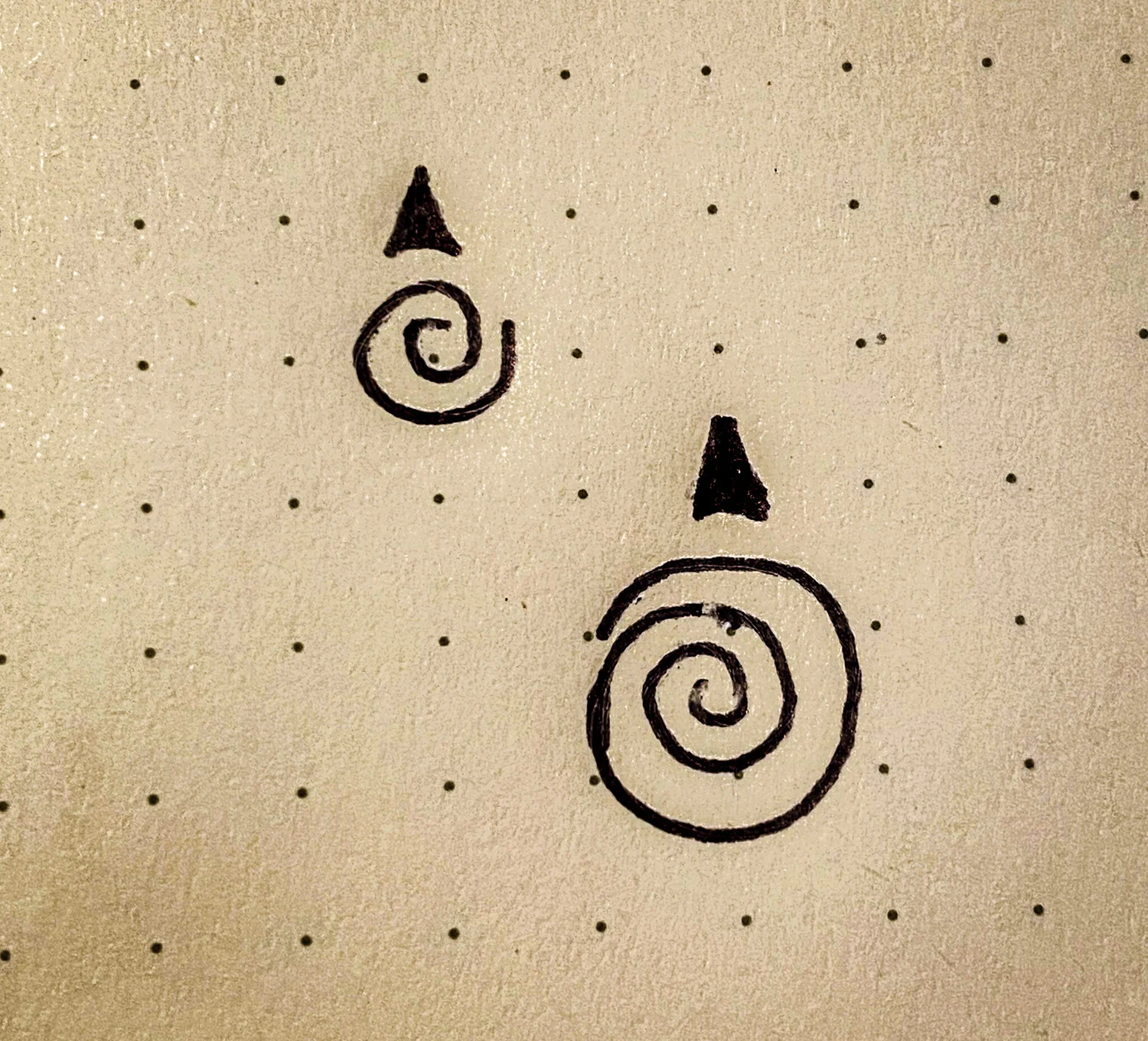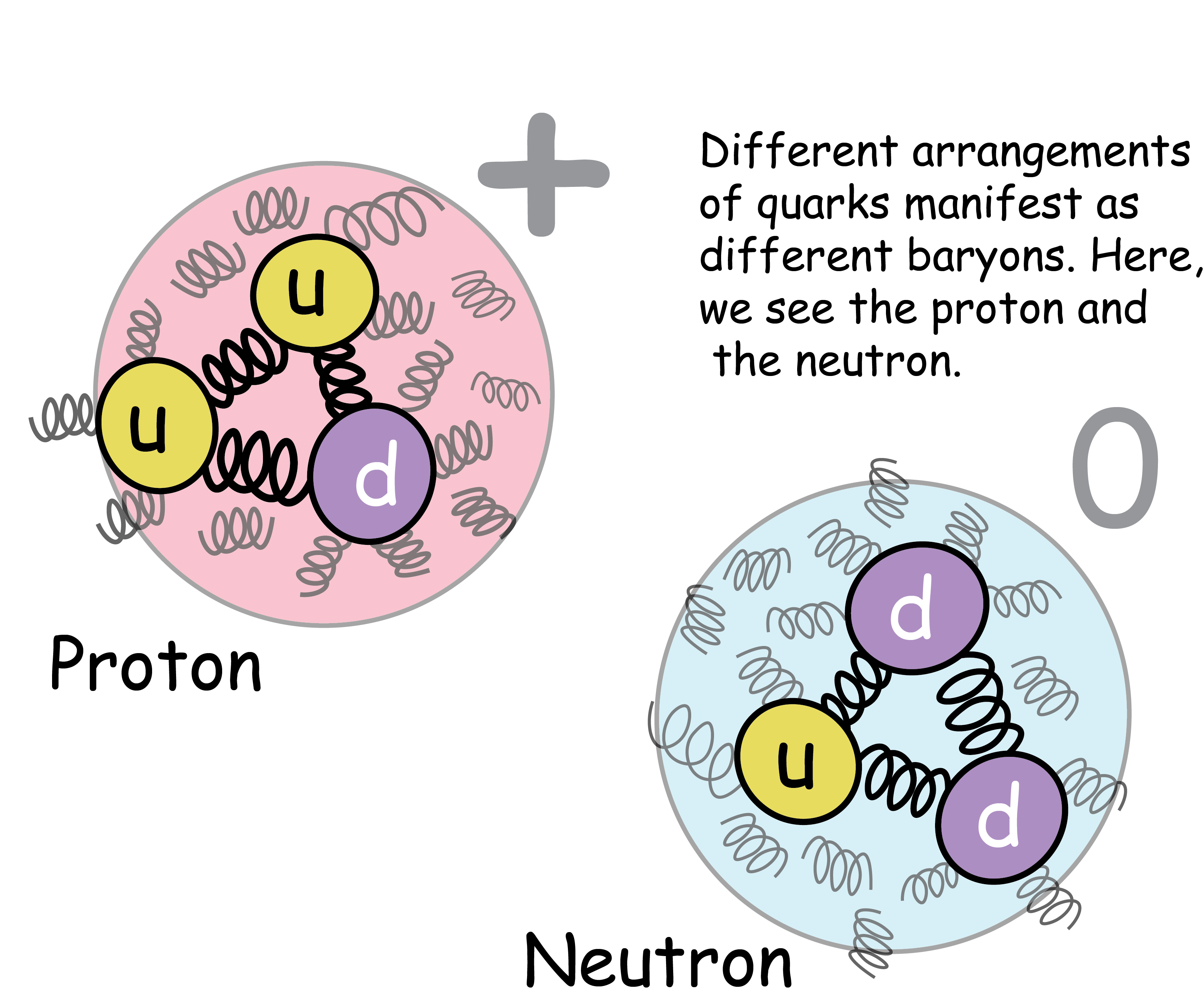
The Up and Down Quarks
The nuclei of atoms are made up of protons and neutrons, which you can think of as tiny bags of nuclear junk: heavy, condensed slimeballs that are hard to describe mathematically. All that said, those nucleons do have structure: they each are comprised of three subatomic particles known as quarks.There are all kinds of quarks, but the two most relevant for everyday life are the up and the down quarks. The proton has two up quarks and one down quark. The neutron has two down quarks and and up quark. Don’t read too much into those names.
Figure: Quarks compose other Particles.

Protons are made up two up quarks and a down. Neutrons are made up of two down quarks and an up.
It’s probably silly to assign electric charges to quarks because they’re never found alone. They’re always found in clumps of two or three or sometime five. But if you insist on the bean counting, you can give the up quark 2/3 of the proton’s positive charge. By that accounting, the bottom quark must have an electric charge of −1/3. The neutron, having two down quarks and an up, has a total electric charge of zero.
Unlike the heavy nucleons, these quarks are rather light, with far smaller masses than even the electron. The mass of the up quark is somewhere around 2 MeV, and the mass of the down quark is closer to 5 MeV. This presents a mystery, as the mass of the three quarks in the proton and the neutron sum only to 9 and 12 MeV, respectively. Considering how both nucleons weigh in as almost 1000 MeV, we’ve got some serious accounting left to do.
Quarks are surrounded by - and constantly buzzing around with - all sorts of other particles. Heavier stuff. The reason for all that heavier junk - the reason the quarks are surrounded by all that nuclear goo is that they are strongly attracted to one another. The aptly named strong nuclear force - the fundamental force of nature that binds quarks into bigger particles - is very strong indeed.
The rest of proton’s mass is all that subnuclear slime, all that buzzing around and other odd quantum effects. It’s kind of like a bit of wild internal, kinetic energy, like a beehive in a box.
This odd feature of nucleon masses is noteworthy because almost 99% of the mass of the nucleus is that subnuclear goo, and the nucleus itself makes up well over 99% fo the mass of the atom. In other words, the mass we experience in day to day life comes from that quantum, nuclear slime.